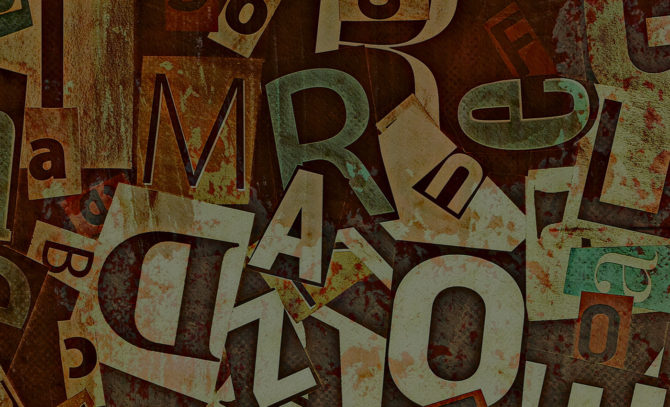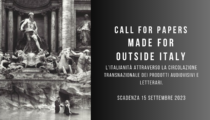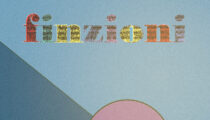L’italianità attraverso la circolazione transnazionale dei prodotti audiovisivi e letterari.…

«La sintassi del mondo». La mappa e il testo
I° CONVEGNO DOTTORALE INTERNAZIONALE
DOTTORATO DI RICERCA IN FILOLOGIA, LETTERATURA ITALIANA, LINGUISTICA FIRENZE, 13-14 MAGGIO 2021
Amo le mappe perché dicono bugie. Perché sbarrano il passo a verità aggressive. Perché con indulgenza e buonumore sul tavolo mi dispiegano un mondo che non è di questo mondo.
W. Szymborska, La mappa
«Sono stanco che Il Sole resti in cielo, non vedo l’ora che si sfasci la sintassi del Mondo, che si mescolino le carte del gioco, i fogli dell’in-folio, i frantumi di specchio del disastro».
Con queste parole, fatte pronunciare a Macbeth, Italo Calvino conclude l’esperimento combinatorio della Taverna dei destini incrociati, nel segno di una dialettica tra ordine e disordine, rigore metodologico e casualità, razionale e irrazionale. Rispetto all’infinità delle storie possibili e alla caotica molteplicità dell’esistenza, l’autore accoglie la sfida di ordinare il narrabile attraverso il succedersi e l’intersecarsi reciproco delle figure estratte da un mazzo di tarocchi, svelando il loro potenziale di macchina narrativa generatrice della fabulazione: e se, specialmente nella parte finale della Taverna, il Caso, il represso, la follia intervengono a scompaginare la geometrica disposizione delle carte, il mazzo può sempre essere nuovamente rimescolato, ricominciando la partita.
Accogliendo l’invito a decostruire la mappa del mondo e a ricomporla seguendo un nuovo schema e secondo una diversa prospettiva, noi allievi del terzo anno del Dottorato di Ricerca in Filologia, Letteratura italiana, Linguistica proponiamo un convegno online dedicato a un tema che abbraccia gli ambiti di studio che ci rappresentano e che ci sembra offra numerosi spunti per un dialogo fruttifero tra giovani studiosi: la mappa, opportunamente coniugata all’ambito testuale.
Si accetteranno proposte originali, individuabili tra i seguenti possibili ambiti:
1) La mappa nel testo. L’immagine della mappa, del sentiero, del labirinto, del confine ha sedotto non solo i viaggiatori, che spesso li utilizzano come bussola per orientare la scrittura nella ricostruzione dei loro viaggi, ma anche poeti e romanzieri. Senza considerare quei classici che fanno parte ormai di un comune orizzonte culturale (si pensi alla Commedia di Dante, a L’isola del tesoro di Stevenson o ai gialli di Agatha Christie), basti citare tra gli
esempi più vicini a noi Giuseppe Ungaretti, che nei Fiumi utilizza delle coordinate spaziali per descrivere il proprio vissuto e recuperare così la propria identità, e Italo Calvino, che nel racconto Il Conte di Montecristo in Ti con zero, opponendo due modalità di mappare la prigione del Castello d’If dove sono rinchiusi Edmond Dantès e l’abate Faria, può sostenere che il labirinto del reale è dominabile solo mediante la ragione, a discapito dell’esperienza. Considerato dunque il potenziale della mappa nell’organizzare e ordinare la materia narrativa e nell’indirizzarla verso un particolare scopo, si prenderanno in considerazione proposte che presentino in maniera originale autori e testi, singolarmente o in confronto tra loro, che hanno utilizzato mappe e immagini a esse collegate per gestire l’intreccio narrativo e veicolare una specifica idea di sé e/o del mondo.
2) La mappa per il testo. In questa sezione si prenderanno in considerazione contributi che propongano itinerari geoletterari relativi al vissuto degli autori, alle relazioni interpersonali, ai luoghi della e nella scrittura; mappe di localizzazione degli altrove e degli oltre, dei non-luoghi, delle eterotopie; quadranti costruiti su coordinate (est/ovest, nord/sud, dentro/fuori, centro/periferia, città/campagna, naturale/artificiale, terrestre/extraterreste etc.) che consentano di collocare il testo nello spazio come di studiare l’impatto dello spazio sul testo.
3) La mappa del testo. Un aspetto non secondario nella comprensione di un testo è lo studio della sua genesi, evoluzione e trasmissione: mappando le varie fasi di elaborazione, sia tramite testimoni primari, ad esempio carte autografe dell’elaborato, sia tramite testimoni secondari, come scambi epistolari, postille o indici dell’opera, lo studioso può verificare lo sviluppo non solo del testo stesso, ma anche le motivazioni che hanno indotto l’autore a ripensare il proprio lavoro. Si pensi a Le ultime lettere di Jacopo Ortis, che mutano in base alle speranze politiche del Foscolo; oppure ai tentativi di Leopardi di dotare il suo Zibaldone di un indice per darne un’ideale chiave di lettura. Si prenderanno in considerazione contributi che analizzino in prospettiva diacronica l’evoluzione del testo per disvelare il metodo di lavoro dell’autore e aiutino nell’interpretazione testuale.
4) La mappa dal testo. Si prenderanno in considerazione studi che indaghino particolari strutture ed elementi retorico-linguistici di un singolo testo o di corpora (come per esempio: paratesti, note, citazioni, illustrazioni; singoli sintagmi, parole-chiave) che, al di là del contenuto evidente dell’opera e al di fuori di scritture di genere memoriale o diaristico, possano essere letti come segnali allusivi e richiami a dichiarazioni ideologiche e/o poetiche, indizi o sistemi di auto-presentazione, auto-definizione e auto-commento, funzionalmente nascosti e dissimulati nel testo.
5) La mappa sul testo. Si selezioneranno contributi che, spaziando dall’ambito degli studi metrici a quello dell’analisi stilistica, pongano l’accento sui meccanismi formali dell’opera letteraria, sugli schemi e le strutture ad esso sottesi, assumendoli come chiave di interpretazione teorico-critica, in un’inscindibile correlazione tra piano dei significanti e piano dei significati.
La call è rivolta a dottorandi in corso e a dottori di ricerca da non più di un anno (dunque i cicli XXXII, XXXIII, XXXIV, XXXV, XXXVI). Le spese di partecipazione sono a carico dei convegnisti.
Tutti gli interessati sono invitati a proporre entro il giorno 15/03/2021 al seguente indirizzo convegnofilletlin@gmail.com un abstract in forma anonima. Nello specifico, alla mail andranno allegati due file in formato pdf: uno, rinominato PROPOSTA, contenente la proposta di max 3000 battute spazi inclusi corredata da un titolo (escluso dal conteggio delle battute); un altro, rinominato PROFILO, contenente le informazioni personali quali NOME, COGNOME, DATA DI NASCITA, UNIVERSITÀ DI APPARTENENZA, CORSO DI DOTTORATO, INDIRIZZO MAIL, BREVE CV CON EVENTUALI PUBBLICAZIONI, GIORNO PREFERITO TRA 4 e 5 GIUGNO O SCELTA INDIFFERENTE, in più il TITOLO DELLA PROPOSTA.
Le relazioni avranno una durata di 20 minuti ciascuna.
L’accettazione o meno delle singole proposte sarà comunicata entro il 31/03/2020. Il link per la connessione verrà pubblicato in prossimità dell’evento.
Per qualunque dubbio non esitate a contattarci all’indirizzo convegnofilletlin@gmail.com o tramite la pagina Facebook UniFi – Dottorato in Filologia, Letteratura italiana, Linguistica.
Il comitato scientifico Prof.ssa Concetta Bianca Prof.ssa Paola Manni Prof.ssa Teresa Spignoli Prof. Marco Villoresi
Il comitato organizzativo Laura Bardelli Elisa Caporiccio Ugo Conti Antonio D’Ambrosio Carlo Facchin Martina Romanelli
«LA SINTASSI DEL MONDO». LA MAPPA E IL TESTO I INTERNATIONAL PHD CONVENTION
PHD COURSE FILOLOGIA, LETTERATURA ITALIANA, LINGUISTICA FIRENZE, 13-14TH MAY 2021
Amo le mappe perché dicono bugie. Perché sbarrano il passo a verità aggressive. Perché con indulgenza e buonumore sul tavolo mi dispiegano un mondo che non è di questo mondo.
W. Szymborska, La mappa
«Sono stanco che Il Sole resti in cielo, non vedo l’ora che si sfasci la sintassi del Mondo, che si mescolino le carte del gioco, i fogli dell’in-folio, i frantumi di specchio del disastro».
With these words, pronounced by Macbeth, Italo Calvino ends his combinatorial experiment of La taverna dei destini incrociati, in view of a dialectic between order and chaos, methodological rigor and randomness, rational and irrational. In comparison with the infiniteness of possible stories and the chaotic variety of existence, the author takes on the challenge to organize what can be narrated through the succession and the mutual intertwining of the figures drawn by a tarot deck, revealing their potential as a narrative machine that generates the fabulation: and if, especially in the final part of the Taverna, the subconscious, the insanity come to undo the geometrical disposition of the cards, the deck can always be reshuffled, and the game can start over.
Taking on the invitation to deconstruct the map of the world and to recreate it on the basis of a new scheme and from a different perspective, we students at the third year of the Ph.D. course in Filologia, Letteratura italiana, Linguistica propose an online conference devoted to a theme that involves the fields of studies that represent us and that we believe it can offer many opportunities for dialogue between young researchers: the map, accordingly translated in a textual context.
We accept original proposals for contributions among the following possible topics:
1) The map in the text. The image of the map, of the path, of the labyrinth, of the edge has seduced both travellers, who often use them as a guide for their writing in the recreation of their journeys, and poets and novelists. Without taking into account those classics that are now part of a common cultural horizon (for example Dante’s Comedy, Stevenson’sTreasure Island or Agatha Christie’s works), one can simply consider Giuseppe Ungaretti,
who in I Fiumi uses spatial coordinates to describe his past and retrieve his own identity, and Italo Calvino, who in Il Conte di Montecristo, a short story from Ti con zero, opposing two ways of mapping the prison of the Chateau d’If where Edmond Dantès and the Abbot Faria are trapped, can claim that the labyrinth of reality is only controllable with reason, to the detriment of experience. Therefore, having considered the potential of the map in organizing and putting the narrative matter in order and addressing it toward a particular purpose, we will evaluate original proposals which present authors and texts, individually or in comparison, who will have used maps and images linked to them to organise the plot and to transmit a specific idea of their self and/or the world.
2) The map for the text. In this section we will consider proposals that offer geoliterary itineraries of the author’s past experiences, interpersonal relationships, locations in and of the writing; positioning maps of the elsewhere and of the beyond, of the nonplaces, the heterotopias; quadrants built upon coordinates (east/west, north/south, in/out, centre/periphery, city/countryside, natural/artificial, terrestrial/extra-terrestrial, etc.) which allow to locate the text in a space and to study the impact of that space on the text.
3) The map of the text. A non-secondary aspect of the understanding of the text is the study of its genesis, evolution and transmission: mapping the different phases of elaboration, both via primary witnesses, such as autograph papers, and via secondary witnesses, such as epistolary exchanges, comments, indexes, the scholar can verify the development of the text and the motivation that led the author to rethink his work. Suffice it to say, Le ultime lettere di Jacopo Ortis, that change with the author’s political hopes, or Leopardi’s attempts to provide the Zibaldone with an index to give it an ideal interpretation. We will consider proposals that analyse the evolution of the text by a diachronic perspective to reveal the author’s working method and to help the interpretation of the text.
4) The map from the text. We will consider studies that examine particular structures and rhetorical and linguistic elements of a specific text or corpora (such as paratexts, notes, quotations, illustrations, syntagmas, keywords) which, beyond the evident subject of the work and memorial or diaristic writings, can be read as allusive signals and references to ideological and/or political declarations, hints or systems of self-presentation, self- definition and self-comment, functionally hidden in the text.
5) The map on the text. We will consider proposals that, in the field of metric and stylistic studies, highlight the formal mechanism of the literary work, the underlying schemes or structures, assuming them as a key for theorical and critical interpretation, in an inseparable association between the levels of signified and signifier.
The call is open to Ph.D. students as well as to recent Ph.D. graduates (maximum one year after receiving their Ph.D. degree). The payment of expenses is not available.
All the students wishing to apply must send in an anonymous form an abstract of their proposal within the 15/03/2021 at the address convegnofilletlin@gmail.com. In particular, the mail must have two attached file in .PDF format: the first one, named PROPOSTA, with just the proposal of a maximum of 300 characters (including spaces) and the title of the essay (not included in the maximum
characters); the second one, named PROFILO, with the necessmary personal information, such as NAME, SURNAME, BIRTH DATE, UNIVERSITY, PH.D. COURSE, MAIL ADDRESS, A SHORT CV WITH ANY EVENTUAL PUBLICATION, PREFERRED DAY AMONG THE 4TH AND THE 5TH OF JUNE AND THE TITLE OF THE PROPOSAL.
Each talk should last for about 20 minutes.
The notification of acceptance will be sent within the 31/03/2021. A link for connection will be published later.
If you have any doubts, please, do not hesitate to contact us at
convegnofilletlin@gmail.com or at
Facebook page UniFi – Dottorato in Filologia, Letteratura italiana, Linguistica.
Scientific committee Prof.ssa Concetta Bianca Prof.ssa Paola Manni Prof.ssa Teresa Spignoli Prof. Marco Villoresi
Organizing committee Laura Bardelli Elisa Caporiccio Ugo Conti Antonio D’Ambrosio Carlo Facchin Martina Romanelli



